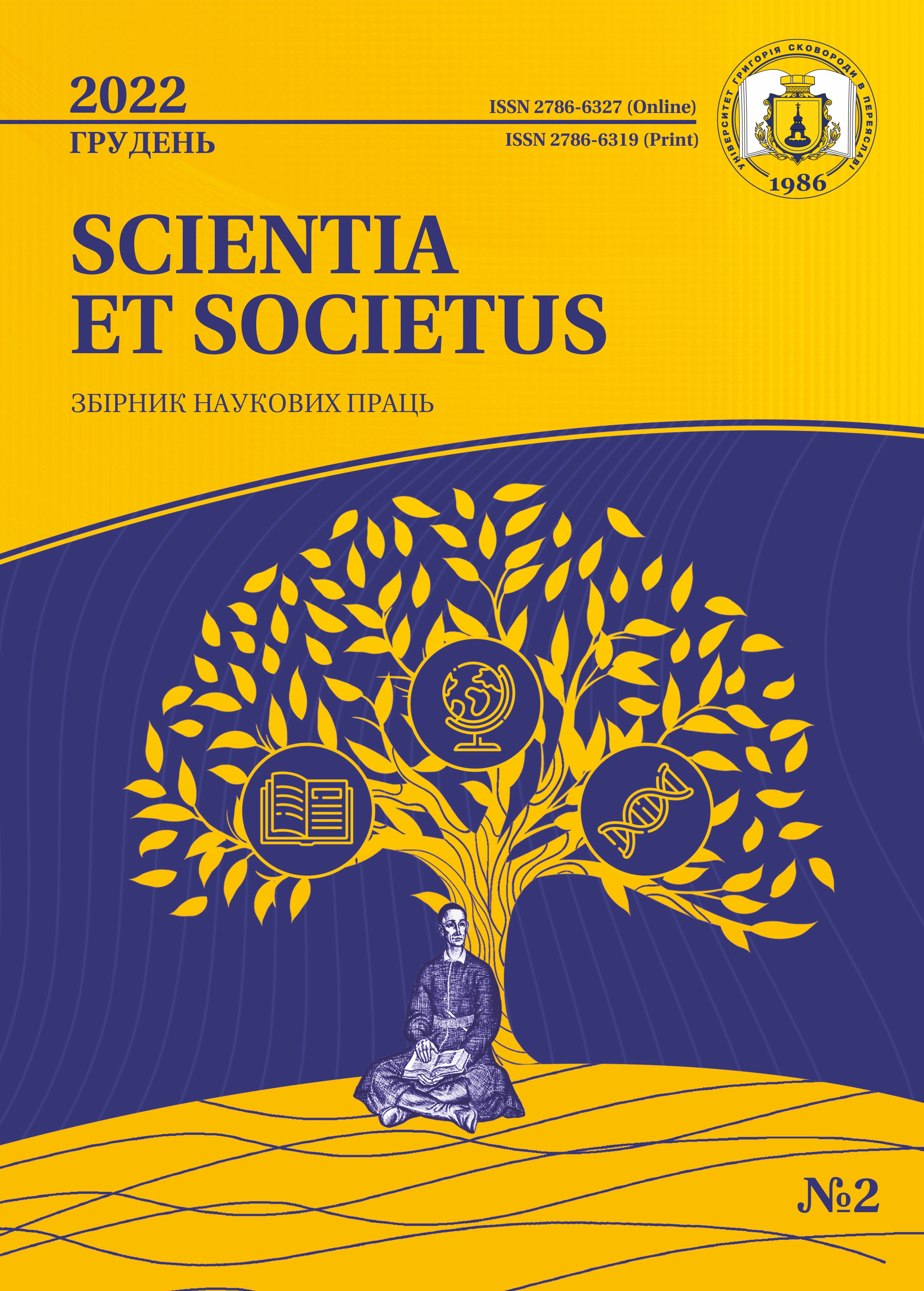НЕЙРОБІОЛОГІЧНІ ТА ПСИХОЛОГІЧНІ АСПЕКТИ ПОСТТРАВМАТИЧНОГО СТРЕСОВОГО РОЗЛАДУ: АНАЛІТИЧНИЙ ОГЛЯД
DOI:
https://doi.org/10.31470/2786-6327/2022/2/101-107Ключові слова:
стрес, посттравматичний стресовий розлад, ПТСР, нейробіологія, нейроанатомія, психологіяАнотація
Військова агресія росії в Україні значною мірою вплинула на психічне здоров’я населення та збільшення кількості осіб з посттравматичним стресовим розладом (ПТСР). Зазначається, що посттравматичний стресовий розлад становить значний ризик для соціально-емоційного та фізичного здоров’я людини. Аналіз останніх досліджень і публікацій дозволяє стверджувати, що посттравматичний стресовий розлад проявляється низкою стійких нейробіологічних змін і психологічних симптомів. Ознаки та симптоми посттравматичного стресового розладу вказують на постійну, аномальну адаптацію нейробіологічних систем до стресу, викликаного пережитою травмою. Нейробіологічні системи, які регулюють реакції на стрес, включають певні ендокринні та нейромедіаторні шляхи, а також мережу областей мозку, які, як відомо, регулюють поведінку страху як на свідомому, так і на несвідомому рівнях.
З’ясовано, що нейробіологічні особливості прояву ПТСР можна об’єднати в три групи: нейроендокринні, нейрохімічні та нейроанатомічні. Основні нейроендокринні ознаки ПТСР пов’язані з аномальною секрецією кортизолу та гормонів щитоподібної залози (трийодтиронін, Т 3; тироксин, Т 4). В цей процес включені зміни в роботі двох систем: гіпоталамо-гіпофізарно- надниркової та гіпоталамо-гіпофізарно-тиреоїдної осей. Нейрохімічні особливості ПТСР включають порушення регуляції катехоламінів, серотоніну, амінокислот, пептидів і опіоїдних нейромедіаторів, які входять до складу нейрошляхів мозку відповідальних за регуляцію/інтеграцію реакцій на стрес і страх. Нейроанатомічні зміни першочергово пов’язані зі зменшенням об’єму гіпокампа, передньої поясної звивини, збільшенням об’єму мигдалини. Відповідно при ПТСР реєструється надмірна активність мигдалини та знижена активація префронтальної кори й гіпокампа. Психологічні зміни, пов’язані з посттравматичним стресовим розладом, включають перезбудження симпатичної нервової системи, підвищену чутливість й реактивність, інтрузії та нав’язливі спогади, стійкі негативні думки та емоції, симптоми уникнення.
Посилання
Aerni A., Traber R., Hock C. et al. Low-dose cortisol for symptoms of posttraumatic stress disorder. The American
Journal of Psychiatry. 2004. Vol. 16. Pp. 1488–1490.
Arborelius L., Owens M. J., Plotsky P. M, Nemeroff C. B. The role of corticotropin-releasing factor in depression
and anxiety disorders. Journal of Endocrinology. 1999. Vol. 160. Pp. 1–12.
Bonne O., Bain E., Neumeister A. et al. No change in serotonin type 1 A receptor binding in patients with
posttraumatic stress disorder. The American Journal of Psychiatry. 2005. Vol. 162. Pp. 383–385.
Bremner J. D., Elzinga B., Schmahl C., Vermetten E. Structural and functional plasticity of the human brain in
posttraumatic stress disorder. Progress in Brain Research. 2008. Vol. 167. Pp.171–86.
De Kloet C. S., Vermetten E., Geuze E. et al. Assessment of HPA-axis function in posttraumatic stress disorder:
pharmacological and non-pharmacological challenge tests, a review. Journal of Psychiatric Research. 2006. Vol. 40. Pp. 550–567.
Diagnostic and statistical manual of mental disorders. Fifth Edition. Arlington. VA : American Psychiatric
Association. 2013. 947 p.
Friedman M. J. Schnurr P. P. The relationship between trauma, post-traumatic stress disorder, and physical health.
Neurobiological and clinical consequences of stress: From normal adaptation to post-traumatic stress disorder. 1995. Pp. 507–524.
Maeng L. Y., Milad M. R. Post-Traumatic Stress Disorder: The Relationship Between the Fear Response and Chronic
Stress. Chronic stress (Thousand Oaks, Calif.). 2017. Vol. 1. https://doi.org/10.1177/2470547017713297
Meewisse M. L., Reitsma J. B., de Vries G. J., Gersons B. P., Olff M. Cortisol and post-traumatic stress disorder in
adults: systematic review and meta-analysis. The British Journal of Psychiatry. 2007. Vol. 191. Pp. 387–392.
Newport D. J., Nemeroff C.B. Neurobiology of posttraumatic stress disorder. Curr Opin Neurobiol. 2000. Vol. 10.
Pp. 211–218.
O’Brien E. Understanding the Neurobiology of PTSD. Psychiatric Times. 2022. URL:
https://www.psychiatrictimes.com/view/understanding-the-neurobiology-of-ptsd.
Patel B., Youssef N. A. (2022). Posttraumatic stress disorder: Diagnosis, measurement, and assessment. Epigenetics
of Stress and Stress Disorders. 2022. Pp. 19–26.
Prang A. J. Thyroid axis sustaining hypothesis of posttraumatic stress disorder. Psychosomatic Medicine. 1999. Vol.
Pp. 139–140.
Reed K., Cleveland S., Thomas J., Hsu A., Jeong A., Nguyen J. et al. PTSD and physiology: The long-term effects
of PTSD and relation to epigenetics, physical health, and chronic diseases. Epigenetics of Stress and Stress Disorders. 2022. Vol. 31. Pp. 137–162.
Ressler K., Nemeroff C. B. Role of serotonergic and noradrenergic systems in the pathophysiology of depression
and anxiety disorders. Depress Anxiety. 2000. Vol. 12. Pp. 2–19.
Shin L. M., Rauch S.L., Pitman R. K. Amygdala, medial prefrontal cortex, and hippocampal function in PTSD.
Annals of the New York Academy of Sciences. 2006.1071. Pp. 67–79.
Shiromani P. J., Keane T. M., LeDoux J. E. Post-traumatic stress disorder: Basic science and clinical practice.
Humana Press. 2009. https://doi.org/10.1007/978-1-60327-329-9
Strawn J. R., Geracioti T. D. Noradrenergic dysfunction and the psychopharmacology of posttraumatic stress disorder.
Depress Anxiety. 2008. Vol. 25. Pp. 260–271.
Trimble M. R. Post-traumatic stress disorder: History of a concept. Trauma and its wake: The study and treatment
of Post-Traumatic Stress Disorder. 1985. Pp. 31–39.
Vaiva G., Boss V., Ducrocq F., Fontaine M., Devos P. et al. Relationship between posttrauma GABA plasma levels
and PTSD at 1-year follow-up. The American journal of psychiatry. 2006. Vol. 163 (8). Pp. 1446–1448.
Vermetten E., Bremner J. D. Circuits and systems in stress. II. Applications to neurobiology and treatment in
posttraumatic stress disorder. Depress Anxiety. 2002. Vol. 16. Pp. 14–38.
Wang S., Mason J. Elevations of serum T3 levels and their association with symptoms in WWII veterans with
combat-related posttraumatic stress disorder: replication of findings in Vietnam combat veterans. Psychosomatic Medicine. 1999. Vol. 61. Pp. 131–138.
Yehuda R. Advances in understanding neuroendocrine alterations in PTSD and their therapeutic implications. Annals of the New York Academy of Sciences. 2006. Vol. 1071. Pp. 137–166.
##submission.downloads##
Опубліковано
Як цитувати
Номер
Розділ
Ліцензія

Ця робота ліцензується відповідно до Creative Commons Attribution 4.0 International License.











